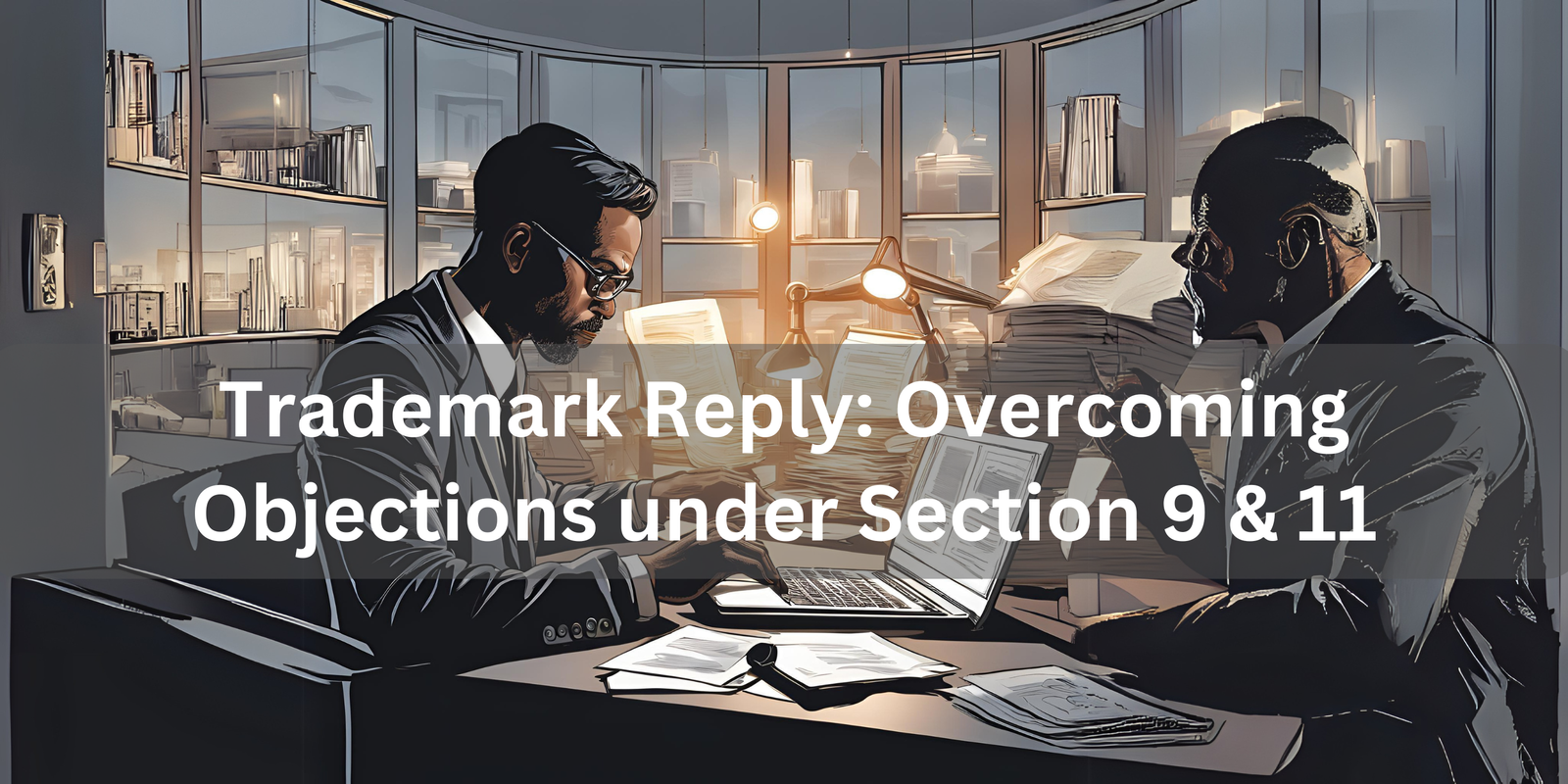When you apply to register a trademark in India, the Registrar examines your application to ensure it meets all legal requirements. Sometimes, they may raise objections under Sections 9 and 11 of the Trademarks Act, 1999. Understanding these objections and knowing how to respond is crucial for securing your trademark.
Understanding the Objections
• Section 9: Absolute Grounds for Refusal
This section deals with objections related to the inherent nature of the trademark:
• Lack of Distinctiveness: If your trademark is too generic or descriptive, it may not distinguish your goods or services from others. For example, using “Fresh Juice” for a beverage brand could face objections for being too descriptive.
• Deceptive or Misleading: Trademarks that could deceive consumers about the nature, quality, or origin of the goods/services are objectionable.
• Offensive or Scandalous Matter: Marks containing offensive or obscene content are not registrable.
• Section 11: Relative Grounds for Refusal
This section concerns conflicts with existing trademarks:
• Identical or Similar Trademarks: If your mark is identical or similar to an existing one for related goods or services, it may cause confusion among consumers. For instance, applying for “CandyLand” when “KandyLand” is already registered for similar products could lead to objections.
• Well-Known Trademarks: Marks that are similar to well-known trademarks, even for different goods or services, can be refused to protect the established brand’s reputation.
Responding to Trademark Objections
Receiving an objection isn’t the end of the road. Here’s how to proceed:
1. Timely Response: You have 30 days from the issuance of the examination report to respond. Delaying beyond this period can lead to the abandonment of your application. 
2. Analyze the Objection: Understand the specific reasons cited by the Registrar. This will help in formulating an effective response.
3. Gather Evidence: Collect supporting documents to strengthen your case:
• Proof of Use: If your trademark has been in use, provide evidence like invoices, advertisements, or affidavits demonstrating its distinctiveness.
• Consumer Recognition: Surveys or testimonials showing that consumers associate the mark with your goods/services can be beneficial.
4. Draft a Comprehensive Reply: Address each point raised in the objection:
• For Section 9 Objections: Argue how your trademark is distinctive and not merely descriptive. Highlight any acquired distinctiveness through extensive use.
• For Section 11 Objections: Emphasize differences between your mark and the cited existing marks in terms of appearance, sound, meaning, or the nature of goods/services.
5. Seek Professional Assistance: Consulting with a trademark attorney can enhance the quality of your response, increasing the likelihood of overcoming the objection.
Navigating trademark objections requires a clear understanding of the grounds for refusal and a strategic approach to address them. By responding promptly and effectively, you can enhance the chances of securing your trademark registration, thereby protecting your brand identity.
Need Assistance with Trademark Objections?
At Legpragmatism, we specialize in guiding businesses through the complexities of trademark registration and objections. Our experienced team is here to help you craft effective responses and secure your brand’s identity. Contact us today to ensure your trademark journey is smooth and successful.





